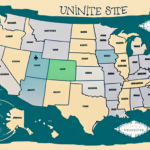What Are the Shipping Rates for UPS Calculated By?
If you're a business owner who frequently uses UPS for shipping packages, understanding how UPS calculates their shipping rates is crucial for managing your expenses effectively. This guide delves into the various factors that influence UPS shipping rates and explores the different UPS shipping rate options available to optimize your shipping strategy.
The Factors that Influence UPS Shipping Rates
UPS considers several factors when calculating shipping rates. These include:
- Distance: The distance between the origin and destination of the package significantly affects the shipping cost.
- Weight: Heavier packages incur higher shipping rates.
- Dimensions: Larger packages may cost more due to the space they occupy.
- Shipping Service: The type of UPS service selected (e.g., Ground, Air) impacts the rate.
- Destination: Shipping internationally versus domestically affects the pricing structure.
- Seasonality: Rates may increase during peak seasons, such as the holiday period, due to higher demand.
Data from the UPS International Shipping Services highlights that distance and weight typically have the most substantial impact on shipping rates, while factors like service type and seasonality play secondary roles.
Additionally, the type of package can influence UPS shipping rates. Fragile items or those requiring special handling may incur extra fees. The declared value of the package also affects the rate, especially if you opt for UPS's insurance services for high-value items.
The package's final location within the destination country can further impact the shipping cost. Shipping to remote or rural areas often involves higher rates due to increased transportation expenses.
How UPS Determines Shipping Costs for Packages
UPS employs a comprehensive formula to calculate the total shipping cost, which includes:
- Base Rate: Determined by the chosen shipping service and the distance the package will travel.
- Weight and Dimensions: Additional charges based on the package's weight and size.
- Additional Services: Services like insurance, signature confirmation, or expedited shipping add to the cost.
Moreover, UPS offers discounts for frequent or high-volume shippers, which can be applied to both base rates and additional services, resulting in substantial savings. Exploring UPS Business Solutions can help businesses identify eligible discounts and optimize their shipping expenses.
UPS provides a variety of shipping options, including Ground, Air, and International services, each with distinct pricing structures and delivery timelines to cater to different business needs.
Understanding the Different UPS Shipping Rate Options Available
Selecting the appropriate UPS shipping rate option is essential for balancing cost and delivery speed. Common UPS rate options include:
- UPS Ground: The most cost-effective option for domestic shipments, offering reliable delivery within 1-5 business days.
- UPS 2nd Day Air: Guarantees delivery within two business days across the United States, suitable for time-sensitive shipments.
- UPS Express Saver: Ideal for international shipments, delivering packages within 1-3 business days to major global destinations.
- UPS Next Day Air: Provides overnight delivery within the United States, ensuring next-business-day arrival.
UPS also offers supplementary services such as signature confirmation, additional insurance, and Saturday delivery to enhance security and convenience. These add-ons may come with additional fees, so it's essential to evaluate your specific needs and budget when selecting shipping options.
Tips on How to Get the Best UPS Shipping Rates for Your Business
While UPS provides reliable shipping services, costs can add up for frequent shippers. Here are strategies to secure the best UPS shipping rates:
- Acquire a UPS Account: Establishing a UPS account can unlock discounted rates, especially for businesses with high shipping volumes. Benefits include package tracking, billing flexibility, and personalized customer support.
- Optimize Packaging: Reducing package weight and dimensions can lead to significant savings. Utilize appropriate packaging materials to prevent excess weight and ensure your packages meet UPS size guidelines.
- Compare Shipping Rates: Regularly compare UPS rates with other carriers like FedEx and USPS to ensure you're receiving the most competitive pricing for your shipping needs.
Additionally, scheduling shipments in advance can qualify you for UPS's scheduled shipping discounts. Businesses with large shipping volumes may also negotiate custom rates by directly contacting UPS sales representatives. For more information on volume discounts, visit the UPS Sales Contacts page.
The Impact of Distance on UPS Shipping Rates
Distance is a pivotal factor influencing UPS shipping rates. The greater the distance between the package's origin and destination, the higher the shipping cost typically is. UPS provides a Zone Chart to estimate shipping costs based on zip code distances.
However, distance isn't the sole determinant. Factors such as package weight, dimensions, and selected service level (ground vs. air) also play significant roles. Leveraging UPS's online shipping tools and discounts for high-volume shippers can help mitigate these costs. For a comprehensive overview, refer to the UPS Help Center.
The Role of Package Weight in Determining UPS Shipping Costs
Package weight is another critical factor impacting shipping rates. Heavier packages incur higher costs, and UPS may charge additional fees for oversized or exceptionally heavy items. To provide accurate shipping quotes, UPS uses a dimensional weight calculation that considers both weight and size, ensuring fair pricing for all package types.
For instance, a large but lightweight package may cost more than a smaller, heavier one due to the space it occupies in transit. To optimize shipping costs, consider consolidating items or selecting more compact packaging solutions.
Choosing the appropriate UPS service based on your delivery speed requirements can also influence costs. While expedited services like UPS Next Day Air offer rapid delivery, they come at a higher price. Opting for slower services like UPS Ground can result in substantial savings.
How to Calculate UPS Shipping Rates for Your E-commerce Store
E-commerce businesses can efficiently calculate UPS shipping rates using tools like UPS WorldShip. This software allows you to estimate shipping costs based on package dimensions, weight, and destination. Additionally, the UPS website offers a shipping calculator where you can input these variables to receive instant rate quotes.
For businesses prioritizing cost-effectiveness, selecting appropriate shipping options is essential. For example, UPS Next Day Air suits urgent deliveries, while UPS Ground is ideal for non-urgent shipments, offering lower rates.
Moreover, utilizing the UPS Business Solutions can provide additional tools and resources to streamline shipping processes and reduce costs.
The Importance of Accurate Package Dimensions in UPS Shipping Rates
Accurate measurement of package dimensions is vital in ensuring correct UPS shipping rates. Inaccurate measurements can lead to unexpected costs or shipping delays. To avoid discrepancies, use reliable measuring tools and follow UPS's packaging guidelines meticulously.
For detailed instructions on proper packaging, refer to the UPS Packaging Guidelines.
How to Negotiate Lower UPS Shipping Rates for Your Small Business
Small businesses that ship frequently with UPS can negotiate lower shipping rates by following these strategies:
- Initiate Negotiations: Reach out to UPS representatives to discuss potential rate reductions based on your shipping volume.
- Benchmark Competitors: Compare UPS rates with other carriers to strengthen your negotiation position.
- Join Shipping Cooperatives: Participating in shipping cooperatives can provide access to discounted rates from UPS and other carriers.
How UPS Fuel Surcharges Affect Shipping Rates and What You Can Do About It
Fuel surcharges are additional fees that UPS applies to shipping rates to offset fluctuating fuel costs. These surcharges vary based on fuel prices and package weight. While it's impossible to eliminate fuel surcharges entirely, you can minimize their impact by:
- Optimizing Package Weight: Reducing the weight of your packages can lower the associated fuel surcharge.
- Selecting Fuel-Efficient Shipping Options: Choose ground shipping over air services when possible to reduce fuel-related costs.
For current fuel surcharge rates, visit the UPS Fuel Surcharges page.
Exploring the Differences Between Domestic and International UPS Shipping Rates
Shipping internationally with UPS involves different rates and fees compared to domestic shipments. Key differences include:
- Customs Fees and Taxes: International shipments may incur additional customs duties, taxes, and brokerage fees, varying by destination country.
- Delivery Times: International shipping typically takes longer, with delivery times influenced by customs processing and distance.
- Service Options: UPS offers specialized international services, such as International Express, which provide faster delivery for an additional cost.
For a comprehensive comparison, refer to the UPS International Services page.
Common Mistakes to Avoid When Estimating Your UPS Shipping Costs
Accurate estimation of UPS shipping costs is essential for budgeting and customer satisfaction. Avoid these common mistakes:
- Inaccurate Package Measurements: Ensure all dimensions and weights are precise to prevent unexpected charges.
- Ignoring Fuel Surcharges: Always account for fuel surcharges when calculating total shipping costs.
- Uniform Rate Assumptions: Different package types and destinations may have varying rates; avoid assuming uniformity.
- Overlooking Additional Services: Factor in costs for services like insurance, signature confirmation, and expedited shipping.
Comparing UPS Shipping Rates with Other Major Carriers like FedEx and USPS
When determining the most cost-effective shipping solution, it's essential to compare UPS rates with other major carriers such as FedEx and USPS. Factors to consider include:
- Service Offerings: Different carriers offer varying services and delivery speeds.
- Pricing Structures: Rates can differ based on weight, dimensions, and destination.
- Additional Fees: Assess any extra charges for fuel surcharges, insurance, or special services.
Utilizing comparison tools on the respective carrier websites can aid in selecting the best option for your business needs:
Understanding the Impact of Peak Season on Your UPS Shipping Rates
Peak shipping seasons, typically from November through December, can significantly affect UPS shipping rates and delivery times. During these periods:
- Increased Rates: Higher demand may lead to elevated shipping costs.
- Delayed Deliveries: Higher shipping volumes can result in longer delivery times.
To navigate peak seasons effectively:
- Plan Ahead: Schedule shipments in advance to secure better rates and ensure timely delivery.
- Explore Alternative Shipping Options: Consider less congested shipping methods or carriers to mitigate delays and costs.
Stay informed about UPS's peak season policies and offerings by visiting the UPS Help Center.




















